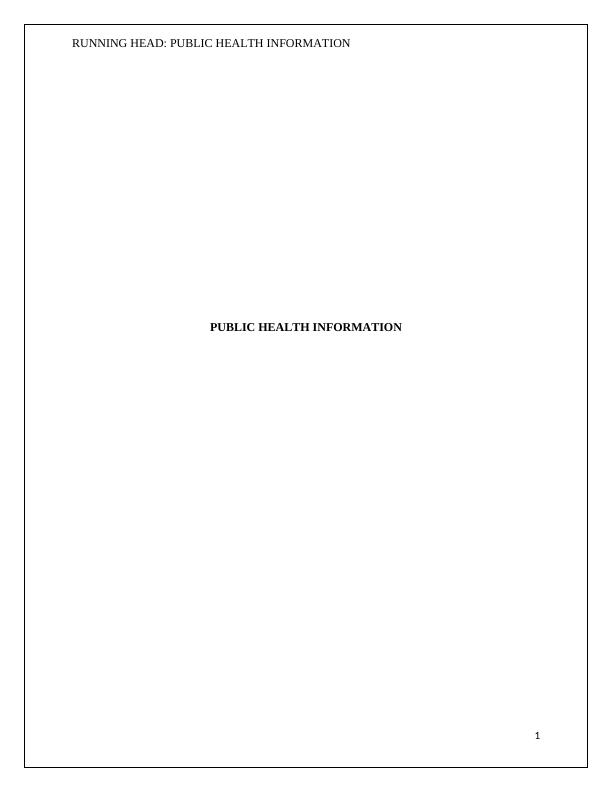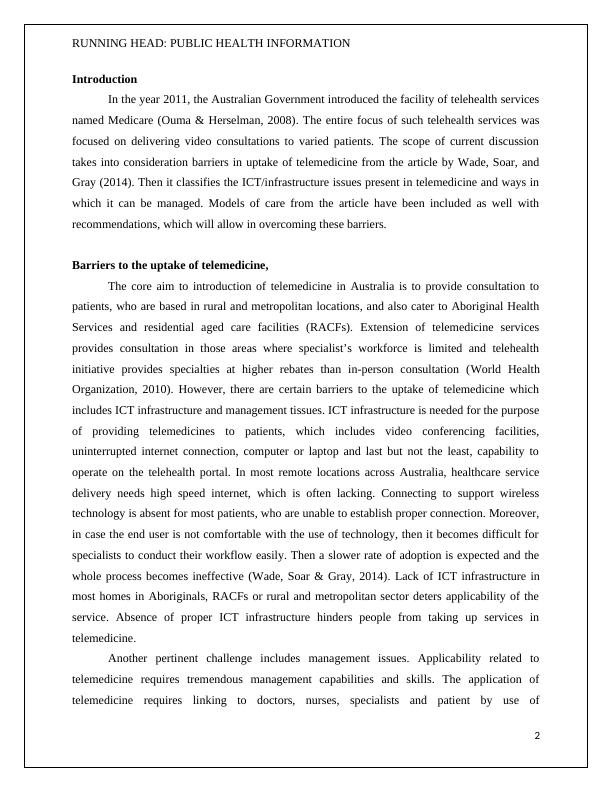Barriers and Potential Solutions for Telemedicine Implementation in Australia
Added on 2023-06-04
5 Pages1345 Words354 Views
End of preview
Want to access all the pages? Upload your documents or become a member.
Barriers to Telemedicine Uptake in Australia
|8
|1689
|20
Telemedicine in Africa: Challenges and Support Structures
|8
|1690
|87
System Analysis Telehealth Assignment
|6
|1128
|102
Telemedicine in Australia
|6
|1509
|89
Evidence Based Nursing Research
|16
|4672
|22
Stakeholder Assessment for Northeast Calgary Women’s Clinic
|4
|522
|79


